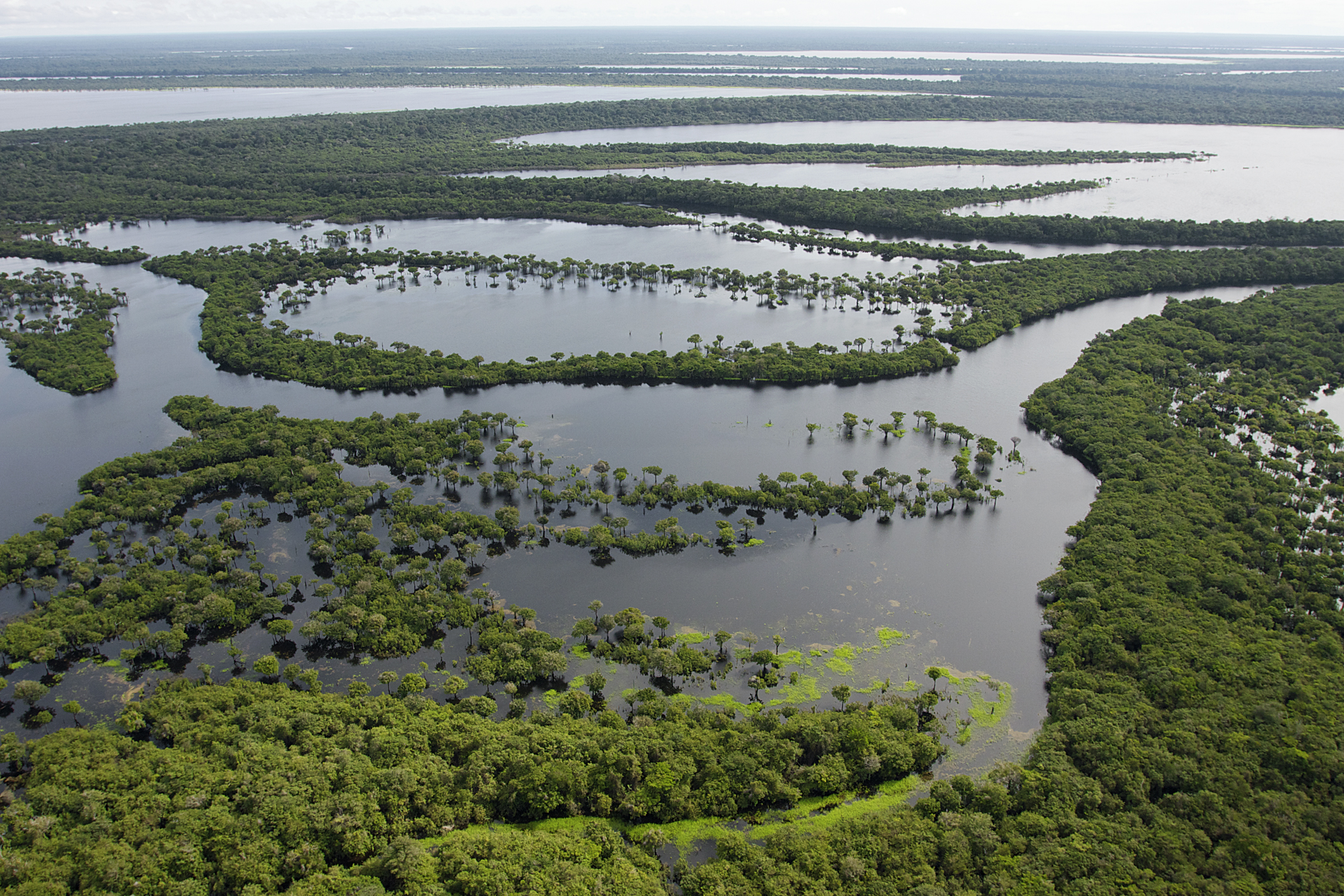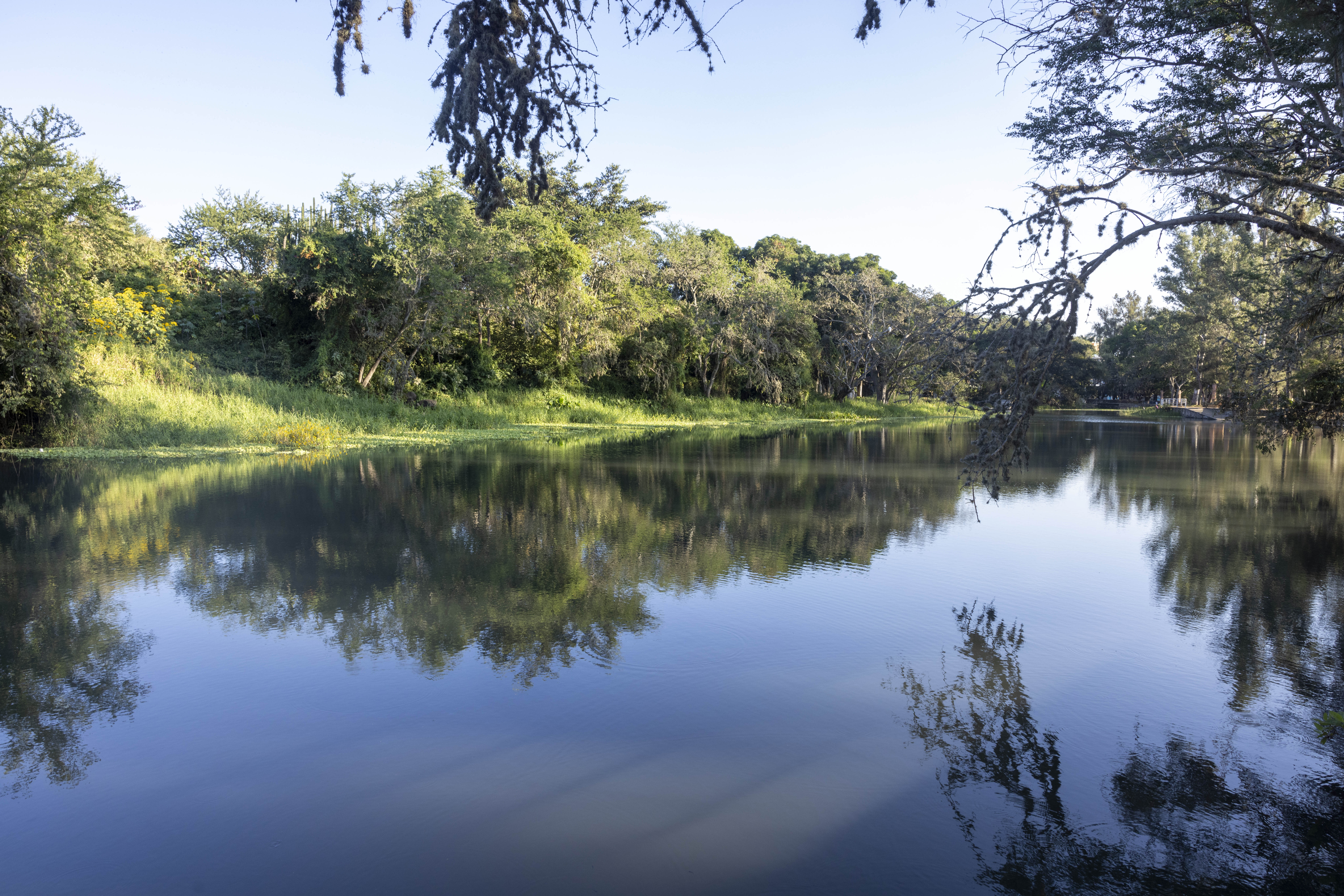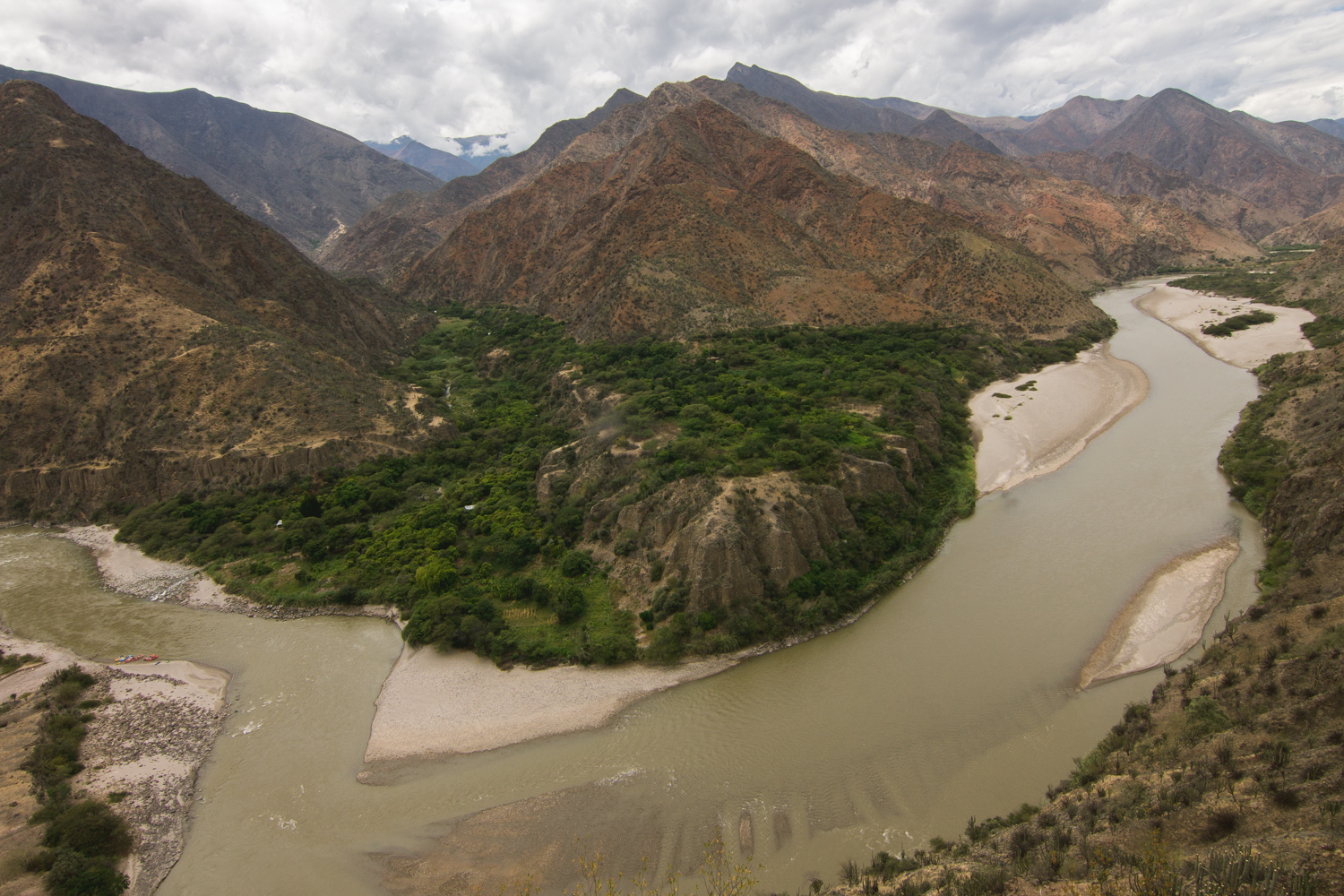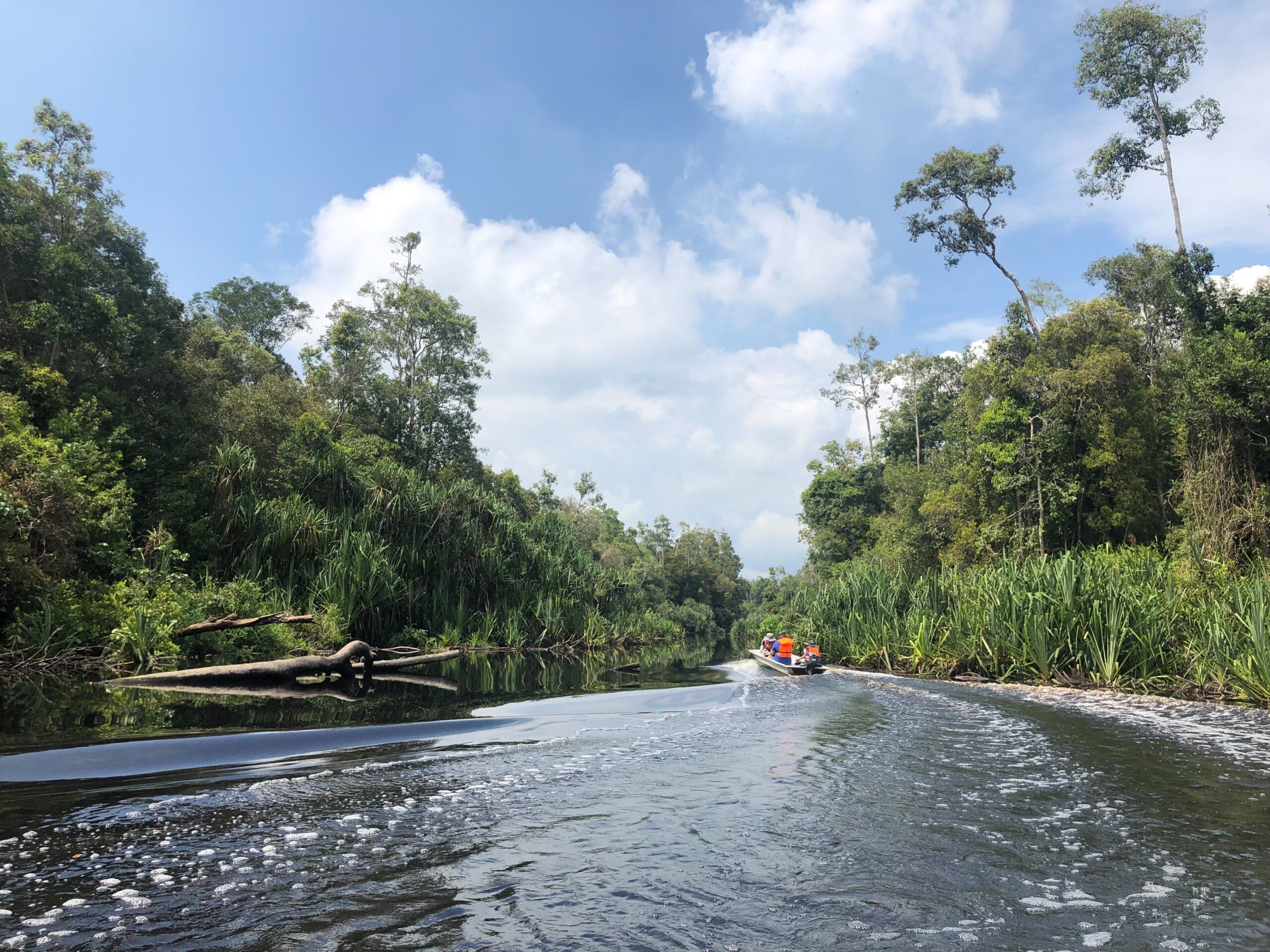
Archipelago Anavilhanas, State of Amazonas, Brazil © Michel Roggo
Safeguarding Freshwater Ecosystems: Navigating the Path to Effective Protection
Freshwater Protection:
Despite freshwater’s significance as the lifeblood of our ecosystems, the protection of freshwater habitats has often lagged behind that of marine and terrestrial ecosystems, contributing to alarming biodiversity losses among freshwater species. In a step forward, during the Convention on Biological Diversity’s 15th Conference of the Parties (COP15) in December 2022, inland waters were specifically included for area-based protection in the ambitious “30×30” initiative, calling for “at least 30 per cent of terrestrial, inland water, and coastal and marine areas” to be protected by 2030. Through formally including ‘inland waters’ in the target, freshwater habitats and the need to protect them are given much more emphasis than they were previously.

Rio Teuchitlán, Mexico © Manfred Meiners Rewild

Rio Manañon, Peru © Benjamin Webb
While the concept of achieving 30% protection by 2030 seems promising, translating this goal into effective conservation strategies for freshwater ecosystems presents unique challenges. Unlike land-based protected areas, freshwater systems are intricately connected, extending from the atmosphere to subsurface landscapes. Watersheds play a crucial role in supporting ecological processes from local to global scales, acting as connectors from source to sea, transmitting water, sediments and nutrients. Freshwater ecosystems also play a critical role in mitigating climate change. These complex interactions demand innovative approaches to protection.
Ian Harrison, Freshwater Specialist, Conservation International, said, “Protection of freshwater is unique, with its own very particular set of challenges. We are protecting ecosystems that are providing essential resources for people – the water people need to drink, grow crops, and for industry and development. Countries need to address those critical needs, which means that protecting the ecosystems often comes second to ensuring water security. In addition, we are talking about a resource that is dynamic and flowing across the landscape. Protection of rivers and wetlands in one place can be totally compromised by things like development, pollution, water extraction just upstream. As Aaron Wolf, Professor of Geography, Oregon State University, wrote “There is no such thing as managing water for a single purpose – all water management is multi-objective and based on navigating competing interests.” That is our challenge”[1].
Redefining Conservation Measures:
Effective protection for freshwater ecosystems thus entails a shift from conventional protected area paradigms. Instead of static area-based targets, conservationists must consider dynamic, ecosystem-specific strategies. These strategies encompass a mosaic of interventions, ranging from aquatic and riparian zones to watershed conservation. Such an approach acknowledges the interconnectedness of freshwater environments and the need for adaptive, context-sensitive solutions.
Balancing Multiple Objectives:
Protecting freshwater ecosystems requires striking a delicate balance between conserving biodiversity and sustaining ecosystem services. Designing and implementing protections that cater to both goals can be challenging. For example, safeguarding a free-flowing river might protect biodiversity by preventing the construction of dams. However, the service of water provision could necessitate reservoirs. These considerations emphasise the importance of clarifying protection objectives and understanding their implications.
The Road Ahead:
Moving forward, the paper underscores the significance of grassroots efforts, involving local communities and indigenous peoples in freshwater protection initiatives. Their input ensures that conservation strategies are contextually relevant and aligned with sustainable ecosystem stewardship. Robin Abell, Durable Freshwater Protection Director, The Nature Conservancy, said, ‘‘The conservation community now recognises the importance of making protections durable. And, key to durability is the support, engagement, and leadership of the local communities who depend on and steward ecosystems. Examples of durable freshwater protection around the world show that effective protections stem from IPLC participation and leadership”.
The paper also emphasises the need for accurate mapping, effective monitoring, and interdisciplinary collaboration to bridge the gaps in our understanding of freshwater ecosystems.

Malaysian peatswamp © Félix Feider

Freshwater habitat © Benjamin Webb
Global Targets, Local Solutions:
The heart of the matter lies in translating global protection targets into localised, effective conservation actions. The process involves identifying key biodiversity areas (KBAs) that hold special importance for freshwater ecosystems and then evaluating their potential for management and protection. This approach, when integrated with existing protected areas and other effective area-based conservation mechanisms (OECMs), can provide a comprehensive framework for freshwater conservation.
Collaboration for Success:
As the push to protect 30% of terrestrial and aquatic areas by 2030 gains momentum, it’s essential to recognise that successful freshwater protection efforts require inclusivity, transparency, and a balance of objectives. Madhu Rao, Chair, IUCN World Commission on Protected Areas, said, “Combining the conservation needs of freshwater and terrestrial ecosystems in integrated protection strategies holds great promise. Governments, civil society and non-governmental organisations, including Indigenous Peoples and local communities must collaborate to ensure the future health and resilience of our vital freshwater ecosystems”.
“Making Global Targets Local for Freshwater Protection” serves as a guiding light, illuminating the complex journey toward safeguarding the planet’s freshwater ecosystems. By embracing dynamic conservation measures, involving local communities, and fostering interdisciplinary collaboration, we can pave the way for a sustainable future where both biodiversity and human wellbeing thrive.
[1] Wolf, A.T. (2009). A long term view of water and International Security. Journal of Contemporary Water Research & Education 142, 67-75
Citation: Flitcroft, R.L., Abell, R., Harrison, I., Arismendi I., & Brooke E. Penaluna, B.E. (2023). Making global targets local for freshwater protection. Nature Sustainability. https://doi.org/10.1038/s41893-023-01193-7
